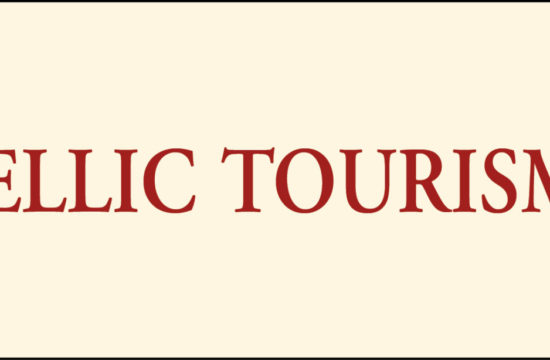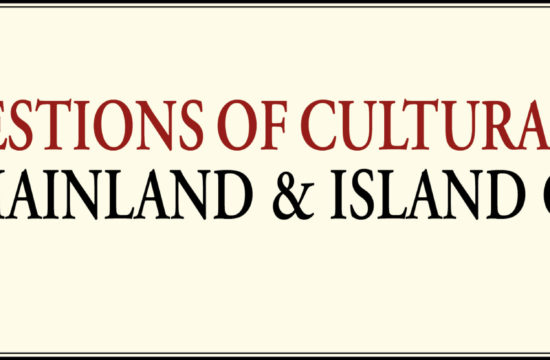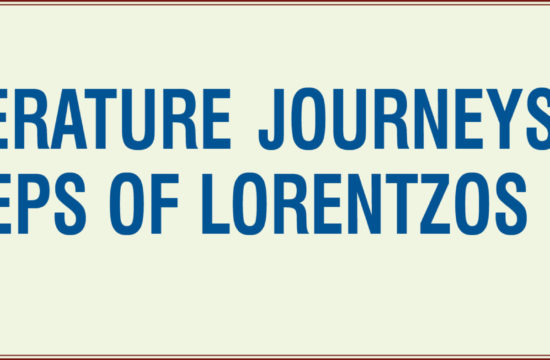Manioy Fotini (fvtinimaniou@yahoo.gr).,National and Kapodistrian University of Athens (NKUA), Master from the University of Aegian.
Trikalitis Costas (kwstas_trikalitis@hotmail.com) PhD Student, Tourism Management University of West Attica
ABSTRACT
This paper deals with the important work of the great Greek folk painter Theofilos Kefalas-Hatzimichael. A Self-taught painter, he created important paintings for his time and impressed Nobel laureates like Seferis „I am proud that our generation discovered Makrygiannis and Theofilos”[1]. As well as „Theophilos is the Papadiamantis of painting“ and „A loner whose dialogue with others is made almost exclusively by paintings“[2].
Keywords: Theophilos, painter, Seferis,particularity,techniques, Elitis,Homer. education
- The particularity in his life and work
Theophilos was one of the most important figures , if not the most important , in the world of painting, not only for its palette and design style, but also for the stimuli offered through the knowledge of the past and the psychic graph of the time. He taught himself, the Iliad and the Odyssey, from the thousand-read books and pamphlets, which he always carried with him and after his death they were found in his precious chest. His notes and drawings were found there, as well as the essentials objects of his simple and unpretentious life. (Manola,Vekri, 2020c).
Theophilos[3], had his own unique way of creating.
The unique beauty of the lesbian nature with the „carefree meltemia“ of Elytis‘ poetry did not leave him unmoved.(Manola,& Tsagkarellis,2020a) Both the subject matter and the way the colors were made gave him a special unique place in the painting history. «Theophilos Hadjimichael had no teacher, except the two great ones and eternal teachers of all truly great Greek painters: the Greek tradition and Greek nature. No modern Greek artist, not even Papadiamantis work , in his small 21 reason, does not come out so spontaneously so directly so intact from these two great ones sources»( Melas,1936).
He used colors which were a mixture of materials such as linseed oil, glue, milk and cheap powders.
The brushes he used, most of the time, were improvised constructions that continue to surprise until this day even more experts on the result of creation. He was, particularly, capable in painting on walls, boards, Cabot (thick cotton cloth), tins and generally any material he could find and could paint.
He identified his painting with the Byzantine style. In addition, he emphasized his characters in a way that would not degrade other elements and persons of his image because he believed that everything should look like there are in the same measures. The protagonist had strong features but also the other characters in his paintings were not hidden behind him but standing next to him.
He painted faces like those of the Revolution large and intense and as the faces descended to the feet the body became thinner and shorter up until the feet were one with the shoes. The figures are depicted seigniorial, as it befits them.
The male figures are depicted similar to the female, but he had difficulty painting childish faces because they looked completely opposite to their age. Also, the background is never empty. He fills the gaps with the same bright colors and various extra data. Another feature is the symmetry he uses in everything.
In general if we wanted to categorize briefly the themes that Theophilos painted, we would divide them into:
- Historical compositions
- Portraits (of heroic figures, his contemporaries, and depictions of types of the time)
- Landscapes and states
- Moments from everyday life
- Copies from pictures of books.
In conclusion, we can add, that he had his own way of making his works stand out despite being self-taught. He was a creator without rules, who was based on imagination, his thoughts and especially his heart.
„One must weigh the painter with the heart. If the heart does not love and does not listen, a folk poet of Lesvos remains for the eyes of the mind a helpless peasant who paints walls and boards“ (Matsas, 1995).
- Techniques in the works of Theofilos
Theofilos was a self-taught artist with various influences and inspirations mainly from everyday life, his experiences, history and the Greek revolution. In his particular homeland the influences from Homer both in the linguistic idiom of the neighboring Agiasos and in his grandfather’s favorite narratives were alive and daily.( Manola. & Papani. 2020d)
He painted walls, and paintings, with the same detail and uniqueness and above all love and passion. Koutsouri’s data(2008), mentions that Theofilos first drew with a pencil, thus proving that he first made the drawing and then shaped it into the final idea that may have differed from the original.
The improvised viscous colors, Theofilos use, give volume and decoration to the places he wants to emphasize. His works of the first period are distinguished by a carefree tendency while after his acquaintance with Stratis Eleftheriadis Tériade, they acquire a more „painting“ or more properly „professional“ status. Many have described Theophilos as „a naive artist”[4]. What is admirable is that he has won the admiration of many well-known Greek artists.
As Stratis Eleftheriadis Tériade states:“Byzantine tradition of fresco is naturally reborn through his work. simplicity, knowledge of a wall surface, the feeling of color on a whitewashed greek wall, miraculous sensitivity to color in general, the ornaments of a cool source of imagination, and finally innocence, which makes primitive art perhaps the most sophisticated and perhaps the best of all. All of the above compose the physiognomy of Theofilos”(Koreksidis,2007) Le Corbusier also states that: “Theophilos brings people closer to the natural law. He is a painter born from the Greek landscape. Through Theophilos, anyone can see the landscape and the people of Greece: red soil, pine and olive grove, sea and mountains of the gods, people bathed in a boldly dangerous calm”.
- Museums and Knowledge
The Museum of Theofilos, is situated outside the center of Mytilene, in Varia, and is created by Stratis Eleftheriadis Tériade. The museum consists of four departments, the walls of which are decorated with 86 paintings.
Right next to this there is the Tériade Museum-Library which includes works made for him and other artists. Many paintings by Theofilos can be found in Volos, in the location of Anakasia Pelion where he spent some years of his life.
This museum is actually the house of G. Kontos whose walls were painted by Theofilos as the two men were connected with a special relationship of mutual respect. The house was damaged by natural disasters however, the Ministry of Culture restored it together with the murals and the paintings of the popular painter.
Secondary Schools and also Fine Arts schools, organize educational programs which take part in the Museums. In this way students study closely Theofilos techniques which also are taught in their university in the context of courses and education.(Manola,&Papanis,2020b).Vekri(2019) proposes a journey on a route that includes his birthplace, Vareia, with the two Museums and continues with an artistic passage from Mytilene, Moria, Papados, Mesagros, Karyni and Panagia Glykophilousa to Petra The route is an educational passage to places and buildings that the tortured Theophilos (Moschos, 2005) has left his mark on the island of Lesvos.
Conclusion
Analyzing all aspects of Theofilos art, it becomes clear why he is characterized as one of the greatest Greek folk artist. His self-taught techniques continue to impress, and are the subject of study and analysis by students and University teachers.
Theofilos life and work constitutes an example for everyone. Also the educational programs which take part in museum spaces is an initiative that seems to have an effect as it connects foreign pupils and students with the cultural heritage of the country.
References
- Vekri,E(2019).Traveling in literature Lesvos in the Collective volume.Literature – Tourism – Culture (ed.Manola,M), Publisher Tsotras Th., Athens
- Elitis U. (1986). Theofilos the Painter. Athens: Gnosi Publications.
- Koutsouris A. , Kaminari A., Melidi E., Daphne N., Stoupathis K., Zboko E., Fasouli D., Aleksopoulou A., (2008) . The third dimension in Theofilo’s painting. Issue 127 Pages 86-89. [Accessed December 21, 2020]. Available from: https://www.archaiologia.gr/wp-content/uploads/2019/07/T127_78-91.pdf
- Koreksidis, S. (2007). Documentary with the title “TERIADE”.
- Le Corbusier (2009). TEXTS ABOUT GREECE-PHOTOS AND DRAWINGS. Athens: AGRA Publications.
- Manola, M. (2019). Literature – Tourism – Culture (ed.), Collective volume. Publisher Tsotras Th., Athens
- Manola, Μ. & Tsagkarellis, Al. (2020a). L’influsso del concetto “mare” nella vita e nella letteratura di Lesbo. ITI-Intercultural Translation Intersemiotic. Ti Vol 9.
- Manola, M. & Papanis, G. (2020b). Anthology of Literary Lesvos of the 20th Century – Suggestions for Educational Practice. Publisher Tsotras Th., Athens.
- Manola, M. & Vekri, I. (2020c). Experimential approaches to the steps of Τheofhilos and Ηomer .Sustainable Development, Culture, Traditions Journal (SDCT-Journal).
- Manola.M. & Papani. G. (2020d), AGIASOS, LESBOS, AN ARCHAIC SOCIETY WITH HOMERIC ORIGINS AND OF A PARTICULAR TOURIST INTEREST, in proceedings of the 4th International Scientific Conference on IT, Tourism, Economics, Management and Agriculture- ITEMA 2020, Online-virtual, October 8, www October 8, 2020
- Matsas, N. (1995). THE FAIRY TALE OF THEOFILOS – FICTION BIOGRAPHY. Athens: Dodoni Publications.
- Melas, S. (1936). Newspaper «Eleuthero Vima».
- Moschou M. (2005). The Biography of Theofilos Hatzimichael (Published PhD thesis) National and Kapodistrian University of Athens. [Accessed December 21, 2020]. Available from: https://thesis.ekt.gr/thesisBookReader/id/31725#page/1/mode/2up.
- Seferis G. (1947). Tests : Theofilos , pages 458-466. Athens: Icarus publications.
- Tsibloulis G. (2010). THEOFILOS HATZIMICHAEL . The acquaintance with his work is a window in nature. Makrinitsa Environmental Education Center, Pelion. [Accessed December 22, 2020]. Available from: http://reader.ekt.gr/bookReader/show/index.php?lib=EDULLL&item=1229&bitstream=1229_01#page/4/mode/2up.
[1] Seferis G. (1947). Tests : Theofilos , pages 458-466 , Icarus publications , Athens.
[2] Elitis U. (1986). Theofilos the Painter , Gnosi Publications , Athens.
[3] Without having ascertained the exact date of his birth, those who studied his biography and work say that he must have been born somewhere between 1866 and 1879 in the town Vareia of Mytiline.
[4] By this term we refer to a tendency of simplicity in the works of artists in terms of material but also the technique they use. A marginalized art that was avoided by many painters in the past. The characteristics of this art, such as faded colors with distance, reduce the size of those displayed with distance, reduce the details with distance, they are perceived in what Theophilos created. Many famous painters followed this kind of art.









